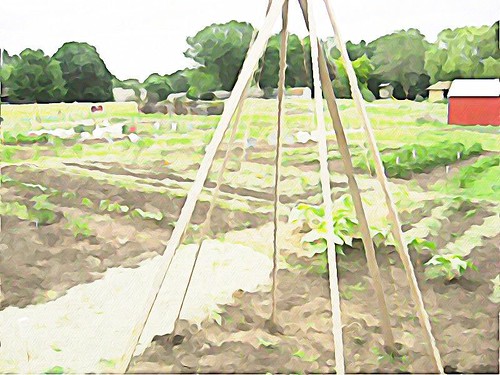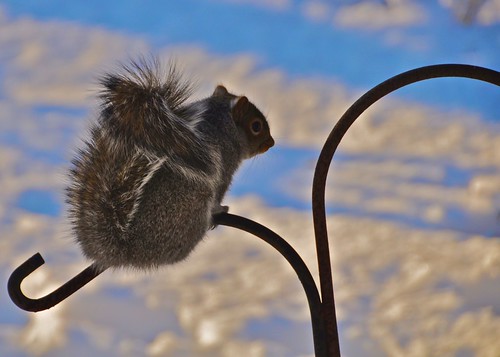Make Your First Organic Garden A Success
Organic gardening is something that many families want to do but never actually try to accomplish.
Having healthy soil in your garden is your plants avoid insect pests.Healthy and well-nourished plants and healthy plants can fight off diseases with ease. To boost your garden’s prospects of giving you the healthiest possible plants, start with a high-quality soil that has fewer chemicals which over time will accumulate salts.
If you have any mildew on the plants, do not go out and buy anything. Plain water with a bit of liquid soap and baking soda will do the trick. This solution can be sprayed onto your plants once per week until the problem is resolved. The baking soda is harmless to your plants and a very effective remedy.
Use climbers if you want to cover any fences and walls. Many climbers are so robust that they can cover the wall or fence in a single growing season. They can grow through shrubs and trees, or you can train them to cover your arbor. Some varieties of these plants will have to be tethered to some sort of support, but some climbers use twining stems or tendrils and attach themselves to those surfaces. Some climbers that have proven to be reliable are honeysuckle, clematis, jasmine, clematis, and climbing roses.
Mint Leaves
Do you love fresh mint leaves grow and take over your lovely garden but still like them? You can control their growth of the mint leaves by placing them in a large container rather than in your garden. If you prefer, you can even place the container in the ground, and the leaves will stay within the boundaries of the pot.
Fall edibles are a wonderful addition to your garden. A pumpkin makes a great container, and costs less than a clay pot. You simply need to cut off the top, scoop out the guts, and spray your pumpkin with Wilt-Pruf. After you have finished this, you will be ready to start planting.
Fertilizing your garden soil. Manure can be effective, although it is important to use a commercially composted product to minimize the risk of pathogens.
You can keep pests from invading your garden by using other plants or natural materials. Slugs can be kept at bay with a patch of marigolds or marigolds. Using these methods eliminates your need for potentially harmful chemical pesticides.
Chamomile tea is effective remedy for fungus problems.
Do you enjoy fresh mint, but don’t like how they engulf your garden in their growth? Keep your mint growth under control by planting them in pots and/or garden containers. The container can be planted in the ground, and it will still prevent the plant from dominating the garden.
Plant with fall color. Maple, beech, varying from bright yellow to rich crimson.When selecting shrubs, consider hydrangea, barberry, or cotoneaster.
Your children can help you with your organic horticulture endeavors. A garden can be a great learning experience for your children, and will give you an opportunity to bond with them while you produce healthy food.
When you are growing organic plants within the home or an enclosed area, it is vital to keep in mind how much light is reaching them. If you’re living in a home that doesn’t receive much sunlight, it makes sense to grow only those varieties meant to thrive in such environments. You can also try using grow-lights for this exact purpose.
Start your peas in a protected indoors environment rather than outside. If you were to plant them inside first, the seeds should germinate better. They will also be healthier and hardier, allowing them to better resist pests and disease. You will be able to transfer the seedlings outdoors after they become better established.
Keep your garden tools handy to work more efficiently.
Try to avoid letting your organic garden at least a short time each day. Even if you’re to busy to focus on your garden’s needs each day, do small tasks that will help you avoid having to do large tasks when you finally do have time. For example, snatch out a weed or two whenever you pass by the garden, you could clear a few bunches of weeds between checking on the burgers.
Fill the jar with beer to an inch lower than the jar’s top. Slugs are attracted by the beer and become trapped in the jar once they enter.
To defend your garden from errant dogs, spray something with a strong scent, including aftershave or old perfume around the perimeter of the garden. This will help mask the scents that attract your dog, and will make your garden a less interesting place for your pet to be.
You may be able to skip watering for an entire day if rain is on the way.
Research botanical insecticides which can be purchased locally to aid in deterring the pest population. These natural insecticides can often be more effective than their chemically engineered pesticides. However, due to their biological makeup, they often decay and disappear quickly.
Think about what you need to use on your garden. Try to use natural alternatives instead of the chemicals you normally use. Compost is a great example of fertilizer.
Be efficient when working in your garden. Don’t waste your time by looking all over for your tools. Prepare all the tools you need before you go out to work on your garden, and put them away nicely when you are done. Even something like a carpenter’s tool belt or some cargo jeans work well to keep tools organized.
When it’s time to dig a hole for a shrub or a tree in an organic garden, try digging an ugly hole to plant them in. If the sides of the hole you dug is packed hard by the shovel, then it may restrict the root from penetrating into the nearby soil.
There are all kinds of plants that can plant in your organic garden. Mulch is a must-have for plants that need acidity to thrive. These types of plants need to be mulched with a thick layers of pine needles during fall each year.
A safe and effective way to deter bugs from your organic garden is to plant garlic in a few places. The smell will repel many destructive insects. Be sure to plant them in an area that is going to be near other plants that are a little more prone to being attacked. A side benefit of placing the garlic is that it is edible.
Make sure you consider adequate spacing when planting your garden, so that each plant is given room enough to grow and flourish. You will most likely underestimate how much space plants will need as they grow. You need to take into account the plant’s size when it is fully grown, as well as allowing space for air circulation between each plant. Think ahead and give each plant room for expansion, by properly spacing the seeds.
Use barrels to trap the water for your garden. This saves you from paying for extra water to do your garden. You will also find that your plants thrive on rainwater.
Making compost is a great way of obtaining fertilizer. An easy way of making organic fertilizer is with a small worm bin for composting. Red wiggler worms, some dirt, kitchen scraps and shredded newspaper will be a good base for your compost bin.
Hopefully this article has taken all of your apprehension about organic gardening completely out of the equation. Start applying some of the tips presented above, and in the near future, you could have your very own productive organic garden.
While organic gardening costs more and requires more effort, the produce that will come out of your garden will be healthier for you. While chemical-based gardening products make bold claims, it is hard to dispute that organic gardening consistently produces superior results.


